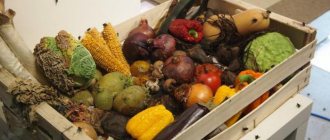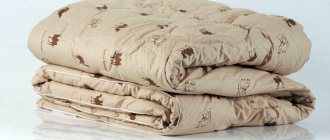No matter how prudent the owner of the apartment is, from time to time his place of residence is visited by various problems and the resulting troubles. One of these problems is often the appearance of various insects in the apartment.
A common type of parasite that literally floods apartments is woodlice. These small crustacean creatures are not capable of causing much harm to human health, but their extremely unpleasant appearance is repulsive.
Woodlouse (photo)
Woodlice: photo
Woodlice: photo.Description of the pest
Name: Woodlice Lat.:
OniscideaClass: Higher crayfish - Malacostraca Order: Isopods - Isopoda
| Habitats: | with high humidity |
| Nutrition: | scavengers |
| Means of destruction: | various chemicals |
In fact, the idea that wood lice are insects is wrong. These small creatures belong to the suborder of crustaceans and are considered one of its most developed representatives.
What do woodlice look like?
Woodlice: structure.
Most woodlice are small in size and their body length is from 1 to 2.5 cm. The color of these creatures is dominated by gray and brown shades. The body of woodlice has an oval, slightly flattened shape and is covered with an arched chitinous shell, divided into movable segments.
Animals have two pairs of antennae, one of which is much better developed than the other. The woodlice's visual organs are located on the sides of the head. The jaws of these crustaceans are intended exclusively for soft food, while the upper pair is devoid of tentacles.
Woodlice have 7 pairs of thoracic limbs. All limbs have the same structure and are used for walking.
How woodlice breathe
Woodlice on plants.
Unlike most other species of crustaceans, woodlice have adapted to life on land. The breathing of these animals is carried out using gills, which are located in the cavity of the internal branches of the thoracic legs.
Woodlice get their oxygen from the moisture covering their gills. That is why they settle in places with high levels of humidity. It is worth noting that some species have even learned to breathe ordinary atmospheric oxygen.
Methods for controlling woodlice
As in the case of other parasites, woodlice can be eradicated from the bathroom and toilet using only comprehensive measures.
Dry the room
Create unfavorable living conditions for woodlice. It is necessary to dry the room. This can be done using a room heater or fan. Make sure that the door to the bathroom is open . After taking a shower or bath, increased humidity is created in the room. Drops of water on the floor, in the sink, on the surface of the bathroom must be wiped dry.
Watch the rug
Crustaceans love to live under the rug. Do not leave it on the floor after water procedures. Moisture accumulates under it, which almost never evaporates from under it. It needs to be hung on a heated towel rail or a hook on the wall. Periodically wash the mat with powder, or replace it with a new one.
Cleaning the premises
Regularly wet clean the bathroom and toilet. In this case, it is necessary to use household chemicals (detergents or disinfectants). Clean out dirt that has accumulated under the bathtub and in hard-to-reach places . For example, under the washing machine, behind the toilet, under cabinets.
Chemicals
Universal means are suitable for controlling woodlice. Which can also be useful against other parasites. Namely: “Tetrix”, “Varan”, “Get”, “Tarax”, “Schabengel”. Their release form and methods of use differ. Follow the dosage indicated in the instructions supplied with them .
When working with chemicals, remember to take safety precautions. Wear a respirator (or mask) and gloves. Keep children and pets away from exposure to drugs.
The bathroom floor can be treated with a solution of water and chlorine (which crustaceans cannot tolerate).
Chlorine contains such cleaning products as “Chistin”, “Belizna”, “Lysoformin 3000” or “Maxi-Dez”.
Woodlice lifestyle and habitat
Saw woodlice
Not really
Despite their excellent adaptability to life on land, woodlice depend on humidity levels. In some species this dependence is stronger, in others it is weaker, and for this reason some of them settle on the coast of fresh and salt water bodies, while others can feel great in greenhouses, greenhouses, basements and bathrooms.
Where can you find woodlice?
Woodlice are active exclusively at night and therefore it is difficult to encounter them during the day. During daylight, animals hide in shelters that reliably protect them from harmful sunlight. Having settled near a person, the woodlice also chooses a safe place to hide.
In the wild, woodlice can be found:
- under stones;
- inside old, rotten stumps;
- in fallen leaves;
- under rotten trees lying on the ground.
Around people:
- greenhouses and cellars;
- cracks in the walls;
- voids behind baseboards;
- walls of sewer pipes.
What do woodlice eat?
Like other representatives of the crustacean suborder, woodlice are scavengers. In the natural environment, their diet mainly consists of decaying leaves, young shoots and rhizomes. Sometimes healthy parts of plants may also appear on their menu.
Woodlice on a plant.
Woodlice that have settled in residential areas easily adapt and feed on everything they find. The diet of “domestic” woodlice may include:
- small food residues;
- scraps of toilet paper;
- fungus and mold formed on various surfaces;
- soap scum.
Preventive measures
Preventive measures are aimed at avoiding unpleasant neighborhoods in the apartment. As far as we know, it is much easier to prevent the appearance of various insects in an apartment than to then spend time and money fighting them. That's why:
- First of all, you should pay attention to the microclimate in the apartment and take measures to reduce the level of humidity in the apartment.
- Secondly, you need to moderately water indoor plants, especially if they do not need it.
- Proper care of indoor plants, including regular inspection of plants, removing fallen and rotten leaves from flowerpots, will also prevent the proliferation of woodlice.
- Fixing drainage and water supply problems will reduce the chances of tiny crustaceans appearing in areas such as the kitchen, bathroom and toilet.
- Repairs should be accompanied by the elimination of gaps formed between walls and pipes through the use of polyurethane foam.
- Do not leave wet rags on the toilet or bathroom floor. In addition to the fact that they emit an unpleasant odor, they also serve as a comfortable haven for woodlice.
- It is better to install grilles with fairly small cells on all ventilation openings.
- In the event of an invasion of woodlice or other pests, you should contact special services to treat primarily basements and attics.
If wood lice appear in your apartment, you should not calmly watch as they multiply and take over new territories. You should immediately think about why they appeared in the apartment and what methods can be used to get rid of them. If this is not done, then they can easily begin to spoil vegetables, as well as indoor plants.
When starting pest control, it is better to develop tactics and control strategies, which should include all known methods of destruction or repelling, based on chemicals, folk remedies and preventive measures.
Peculiarities of woodlice reproduction
Woodlice and offspring.
Reproduction in these small crustaceans occurs in a very interesting way. First, copulation occurs and the female's testes are filled with seed. After some time, the female molts, and her body transforms slightly.
After such a restructuring of the body, one part of the seed fertilizes the eggs, while the other continues to be stored in the testes. When the first fertilized eggs are carried and hatched, the remaining seed fertilizes a new batch. It turns out that one copulation allows you to get two broods of small woodlice.
What if they reappeared due to dampness?
If woodlice reappears in your home, you need to check whether all preventive measures have been followed. If all the measures have been followed, then you should contact professional exterminators; they will definitely destroy the wood lice forever. If not all measures were followed, then it is necessary to eliminate the cause that provoked the reappearance of woodlice and destroy them by any effective method.
If you carefully monitor the cleanliness of the bathroom and toilet, and do not allow the humidity level to increase, then woodlice will definitely not settle in your home.
If you find an error, please select a piece of text and press Ctrl+Enter.
Woodlice habitat
When choosing a place to live, woodlice prefer warm and humid areas. They can be found not only near reservoirs, but also in steppe or even desert areas. The habitat of these crustaceans extends over almost the entire world, but the greatest species diversity is noted in regions with a warm and humid climate.
In cooler climates, woodlice are more likely to live near people. These small crustaceans can be found in places such as:
- greenhouses;
- greenhouses;
- basements;
- cellars;
- bathrooms;
- the inside of old stumps;
- near open garbage and compost pits;
- under fallen leaves or piles of rotting tops;
- under rotten logs and boards.
What do they eat and how do they live?
Woodlice prefer to be nocturnal and during the daytime it is almost impossible to see them in the bathroom or toilet. The presented crustaceans live in the darkest corners, can hide under tiles or wet towels, and are placed under damp rubber mats. Therefore, if you need to determine whether wood lice are present in the room, it is first recommended to inspect the listed places.
As for the food of the presented crustaceans, it consists of particles of accumulated dirt, small pieces of soggy paper and soggy soap residues. If the kitchen is not cleared out for a long time, then the woodlice will move from the bathroom to the kitchen and feed on leftover human food.
What harm can woodlice cause?
A small number of these crustaceans are not capable of causing serious harm to humans. But, if a large colony of woodlice has settled nearby, the following problems may arise:
- soil compaction and disruption of air circulation in the root system of plants;
- harming young seedlings;
- infection of plants by various infections and fungi;
- spoilage and contamination of food supplies;
- damage to walls and ceilings in the house.
Despite the possible harm, wood lice can also bring benefits. In the process of their life activity, they enrich the soil with useful substances and make it more fertile.
The most common types of woodlice
The species diversity of woodlice is quite large. There are even giant marine species, the body length of which reaches 30-50 cm. On the territory of Russia you can find the three most common species.
Common armadillo
A small species up to 1 cm long. In case of danger, armadillos are able to curl up into a ball. Thus, their body is completely hidden under a durable shell. The armadillo most often lives in cellars and basements.
Rough woodlice
Unlike the armadillo, she cannot curl up into a ring, but she runs very fast. Rough woodlice is very common in residential buildings and apartments, and causes damage to indoor plants and food products.
Woodlouse Rathke
Representatives of this species live in large numbers in Europe and Russia. Their habitats are most often located in dense urban areas. The body of woodlice of this species is more narrowed and flattened, and the shell is light in color.
In large numbers, woodlice will cause discomfort and harm to indoor flowers. They must be dealt with using accessible methods!
Common mistakes in woodlice control
Woodlice may appear again in your apartment if mistakes are made in the fight against them. For example, you treat the room well with chemicals, but forget to ventilate it. Or you are too lazy to clean regularly. Or you don’t do it very well. They were not lazy and cleaned out all the dirt under the bathtub, but did not move the washing machine. A towel, rag or sponge accidentally fell behind the washing machine. Which retain moisture, thereby attracting woodlice.
If one chemical does not help you, replace it with another. Or the rules for using the drug are not followed.
Woodlice can enter you through ventilation. Cover it with fine mesh so they can't get through .
If you can’t deal with annoying arthropods on your own, you can call professional exterminators. The result of their work will be 100%.
Keep clean! And we wish you success in the fight against uninvited guests!











